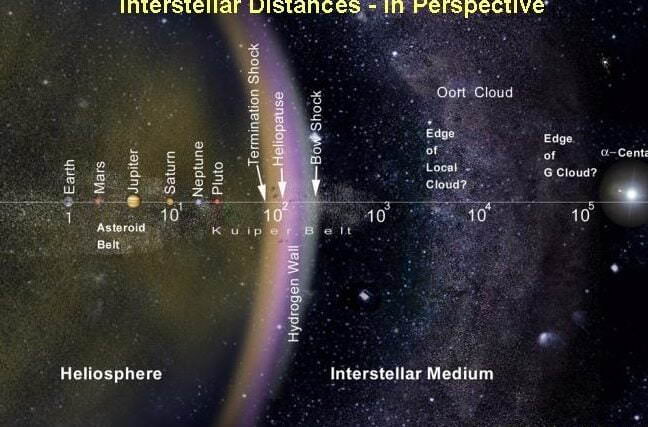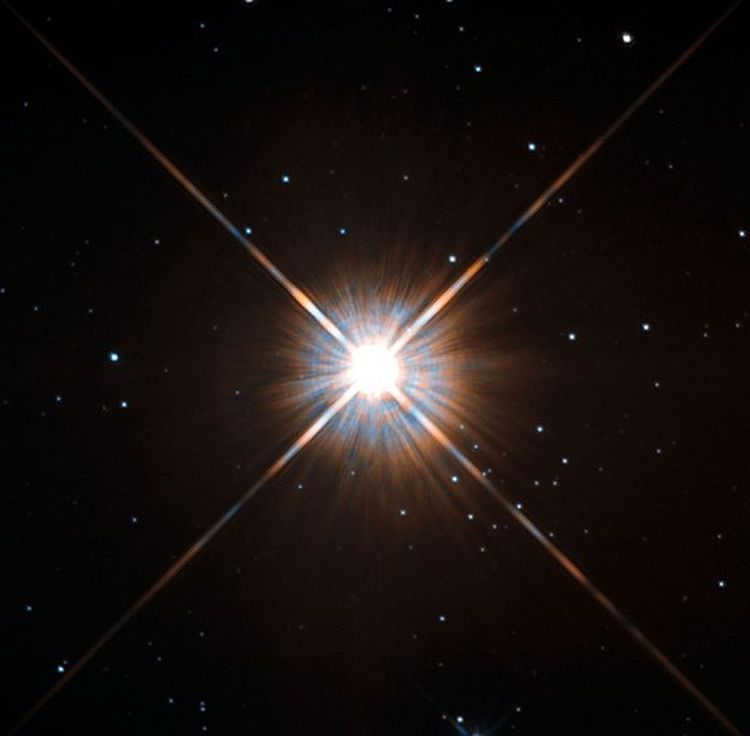
The closest star to the Sun was discovered by Robert Innes in 1915 and given the name Proxima Centauri. Proxima Centauri is a red dwarf that can be found in the Alpha Centauri system.
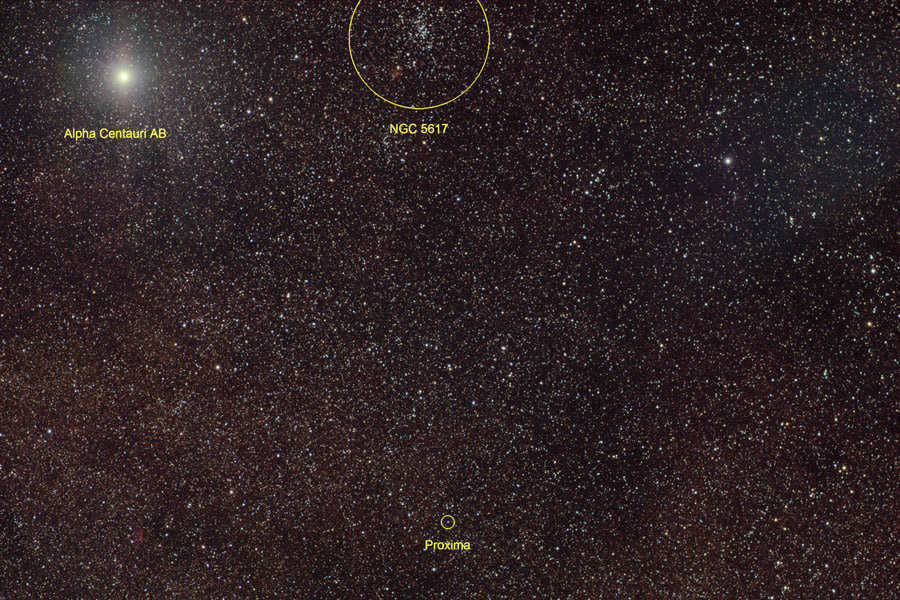
Proxima’s Profile
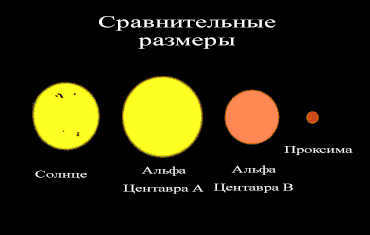
The diameter of this star is seven times smaller than the diameter of the sun, and the same applies to its mass. Its luminosity is only 0.17% of the sun’s luminosity, or a mere 0.0056% in the visible spectrum to the human eye. This clarifies why it cannot be observed with the naked eye and why its discovery only occurred in the 20th century. The distance from the sun to this star is 4.22 light-years, which, in cosmic terms, is relatively close. In fact, the gravitational pull of our sun reaches about half that distance! However, for humanity, this distance is truly immense.
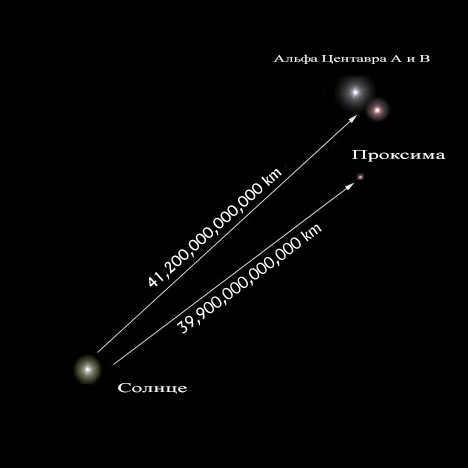
Distance to Proxima in kilometers
Distances on a planetary scale are typically measured in light-years. A light-year is the distance that light can travel in a vacuum in one year, which is equivalent to about 9.46 trillion kilometers. To put these distances into perspective, let’s consider a few examples. The distance from Earth to the Moon is approximately 1.28 light-seconds, and with current technology, it takes about 3 days to travel this distance. Distances between planets in our solar system can range from 2.3 light-minutes to 5.3 light-hours. In other words, the longest journey within our solar system would take just over 10 years to complete in an unmanned spacecraft.
What is the duration of the flight?
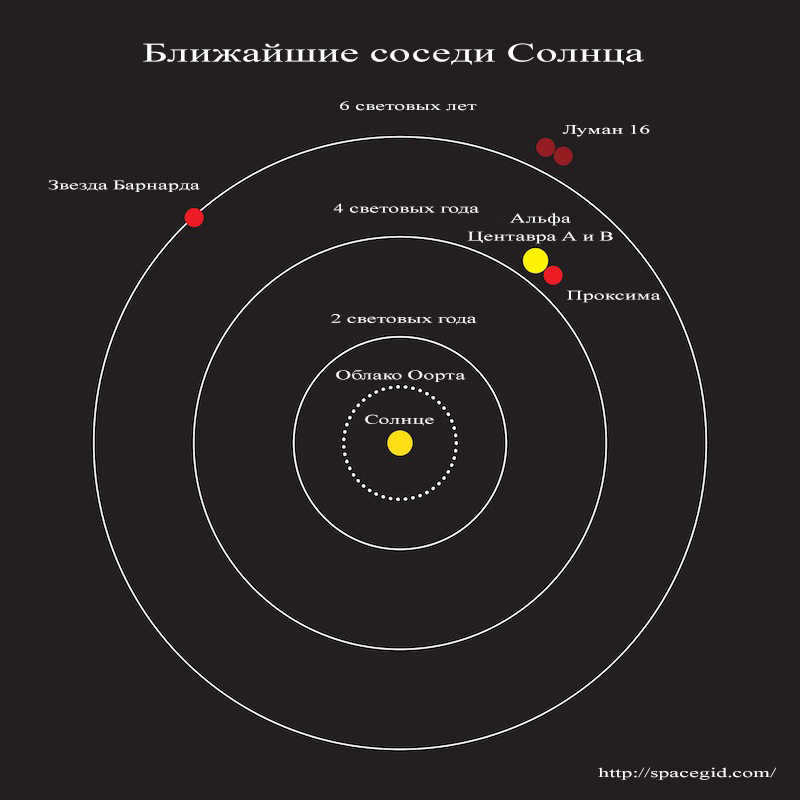
The nearest stars to our Sun
Let’s now consider the time it would take for us to travel to Proxima Centauri. The current record holder for speed is the unmanned spacecraft called Helios 2. It can reach speeds of 253,000 kilometers per hour, which is equivalent to 0.02334% of the speed of light. If we do the calculations, it would take us approximately 18,000 years to reach the closest star. Unfortunately, with our current technological capabilities, we can only sustain a spacecraft for 50 years.

Journey to Proxima Centauri
List of the nearest stars to our Sun
| 0 | Solar system | Sun | 0 | G2V | −26,72 ± 0,04 | 8.32 ± 0.16 sv. min |
| 1 | α Centauri | Proxima Centauri | 1 | M5.5Ve | 11,09 | 4,2421 ± 0,0016 |
| α Centauri A | 2 | G2V | 0,01 | 4,3650 ± 0,0068 | ||
| α Centauri B | 2 | K1V | 1,34 | |||
| 2 | Barnard’s Star | 4 | M4Ve | 9,53 | 5,9630 ± 0,0109 | |
| 3 | Luhmann 16 | A | 5 | L8 | 23,25 | 6,588 ± 0,062 |
| B | 5 | L9/T1 | 24,07 | |||
| 4 | WISE 0855-0714 | 7 | Y | 13,44 | 7,18 +0,78 −0,65 | |
| 5 | Wolf 359 | 8 | M6V | 13,44 | 7,7825 ± 0,0390 | |
| 6 | Laland 21185 | 9 | M2V | 7,47 | 8,2905 ± 0,0148 | |
| 7 | Sirius | Sirius A | 10 | A1V | −1,43 | 8,5828 ± 0,0289 |
| Sirius B | 10 | DA2 | 8,44 | |||
| 8 | Leiten 726-8 | Leiten 726-8 A | 12 | M5,5Ve | 12,54 | 8,7280 ± 0,0631 |
| Leiten 726-8 B | 12 | M6Ve | 12,99 | |||
| 9 | Ross 154 | 14 | M3,5Ve | 10,43 | 9,6813 ± 0,0512 | |
| 10 | Ross 248 | 15 | M5,5Ve | 12,29 | 10,322 ± 0,036 | |
| 11 | WISE 1506+7027 | 16 | T6 | 14.32 | 10,521 | |
| 12 | ε Eridana | 17 | K2V | 3,73 | 10,522 ± 0,027 | |
| 13 | Lacaille 9352 | 18 | M1.5Ve | 7,34 | 10,742 ± 0,031 | |
| 14 | Ross 128 | 19 | M4Vn | 11,13 | 10,919 ± 0,049 | |
| 15 | WISE 0350-5658 | 20 | Y1 | 22.8 | 11,208 | |
| 16 | EZ Aquarius | EZ Aquarius A | 21 | M5Ve | 13,33 | 11,266 ± 0,171 |
| EZ Aquarius B | 21 | M? | 13,27 | |||
| EZ Aquarius C | 21 | M? | 14,03 | |||
| 17 | Procyon | Procyon A | 24 | F5V-IV | 0,38 | 11,402 ± 0,032 |
| Procyon B | 24 | DA | 10,70 | |||
| 18 | 61 Swan | 61 Swan A | 26 | K5V | 5,21 | 11,403 ± 0,022 |
| 61 Swan B | 26 | K7V | 6,03 | |||
| 19 | Struve 2398 | Struve 2398 A | 28 | M3V | 8,90 | 11,525 ± 0,069 |
| Struve 2398 B | 28 | M3,5V | 9,69 | |||
| 20 | Groombridge 34 | Groombridge 34 A | 30 | M1,5V | 8,08 | 11,624 ± 0,039 |
| Groombridge 34 B | 30 | M3,5V | 11,06 | |||
| 21 | ε Indian | ε Indian A | 32 | K5Ve | 4,69 | 11,824 ± 0,030 |
| ε Indian B | 32 | T1V | >23 | |||
| ε of Indian C | 32 | T6V | >23 | |||
| 22 | DX Cancer | 35 | M6.5Ve | 14,78 | 11,826 ± 0,129 | |
| 23 | τ Keith | 36 | G8Vp | 3,49 | 11,887 ± 0,033 | |
| 24 | GJ 1061 | 37 | M5,5V | 13,09 | 11,991 ± 0,057 | |
| 25 | YZ Kita | 38 | M4.5V | 12,02 | 12,132 ± 0,133 | |
| 26 | Leiten’s Star | 39 | M3.5Vn | 9,86 | 12,366 ± 0,059 | |
| 27 | Teegarden star | 40 | M6,5V | 15,14 | 12,514 ± 0,129 | |
| 28 | SCR 1845-6357 | SCR 1845-6357 A | 41 | M8,5V | 17,39 | 12,571 ± 0,054 |
| SCR 1845-6357 B | 42 | T6 | ||||
| 29 | Kapteyn’s star | 43 | M1,5V | 8,84 | 12,777 ± 0,043 | |
| 30 | Lacaille 8760 | 44 | M0V | 6,67 | 12,870 ± 0,057 | |
| 31 | WISE J053516.80-750024.9 | 45 | Y1 | 21,1 | 13,046 | |
| 32 | Kruger 60 | Kruger 60 A | 46 | M3V | 9,79 | 13,149 ± 0,074 |
| Kruger 60 B | 46 | M4V | 11,41 | |||
| 33 | DEN 1048-3956 | 48 | M8,5V | 17,39 | 13,167 ± 0,082 | |
| 34 | UGPS J072227.51-054031.2 | 49 | T9 | 24.32 | 13,259 | |
| 35 | Ross 614 | Ross 614 A | 50 | M4,5V | 11,15 | 13,349 ± 0,110 |
| Ross 614 B | 50 | M5,5V | 14,23 | |||
| 37 | Wolf 1061 | 53 | M3V | 10,07 | 13,820 ± 0,098 | |
| 38 | Star van Maanen | 54 | DZ7 | 12,38 | 14,066 ± 0,109 | |
| № | Designation | № | Spec. class | Species star magnitude. | Distance, sv. year | |
| Star system | Star or brown dwarf | |||||
What is the duration of a journey to the nearest star?
The universe is unfathomably immense. Even the stars in closest proximity to us are situated at a considerable distance. However, if we were to embark on a voyage to the nearest star, how long would it take? Let’s perform a calculation.
Utilizing the current available technology and employing a “gravity slingshot” technique involving Jupiter, it is plausible to attain speeds of approximately 350,000 kilometers per hour. As an example, the Parker Solar spacecraft has successfully achieved speeds of 343,000 kilometers per hour, setting a record for the highest velocity ever reached by an artificial object.
Alpha Centauri is located approximately 4.3 light years from our planet, which is equivalent to a staggering 40 trillion kilometers. If we were to travel at this speed, it would take an estimated 15,000 years to reach this remarkable triple star system. However, is it possible that there are alternative technologies for interstellar travel? Is the field of science stagnating? Not at all. Science is constantly evolving and pushing the boundaries of what is possible.
The ion engine
Ion propulsion has been a subject of study for rocket designers for space travel since the 1950s and has made appearances in science fiction works. However, it has also been successfully used in practical applications.
The first spacecraft to utilize an ion engine as its primary propulsion system was Deep Space-1. Unlike traditional rockets that produce a fiery exhaust, the ion engine emits a mesmerizing blue glow. This glow is created when electrically charged xenon atoms are expelled from the engine. Xenon is the same gas found in light bulbs. This propulsion process generates a degree of thrust, propelling the ions into space at speeds of approximately 110,000 kilometers per hour. However, Deep Space-1 did not travel at such high speeds due to its greater mass compared to the ions.
The resulting thrust from ion engines is extremely minimal, comparable to the sensation of a sheet of paper gently falling into the palm of your hand. This technology does not allow for fast acceleration and is better suited for patient individuals.
However, if time is not a pressing factor, ion propulsion can be a suitable choice. Calculations and experiments have shown that in a span of 24 hours, this type of thrust can increase the spacecraft’s speed by 25-32 kilometers per hour. Throughout the Deep Space-1 mission, the ion engine managed to boost its speed by a whopping 11,000 kilometers per hour.
By utilizing this technology, it would take approximately 4,900 years to reach half the speed of light. On a journey to Alpha Centauri, the spacecraft would accelerate for half of the trip and then decelerate for the other half.
Remarkably, ion propulsion technology has the potential to transport us to Mars in just 270 days!
Stars, Await Our Arrival
However, there are various obstacles that have hindered the progress of these advancements. Ion engines, for instance, are incredibly intricate in their design, and any significant space expedition would require an immense supply of propellant.
Nevertheless, do not lose hope. There are also ongoing projects involving rocket engines that operate on nuclear energy. Theoretical calculations suggest that these engines could achieve speeds of up to 20% of the speed of light, or even higher. With such velocities, a journey to Alpha Centauri could be completed in less than 25 years!
Considering the vastness of the Universe, this timeframe is practically a blink of an eye.
Dear readers! If you found this article interesting, please like and subscribe to our channel! Thank you!
How much does it cost to travel to the closest star? Prepare to be amazed!
For centuries, humans have marveled at the vastness of the universe, eagerly seeking to comprehend its mysteries. Thanks to remarkable advancements, we have not only been able to observe celestial bodies from our home planet, but also venture into the cosmic abyss itself. Throughout the ages, generations have pondered the question: what is the price tag attached to a journey to the nearest star? In this article, we will provide you with a comprehensive overview based on the latest scientific breakthroughs.
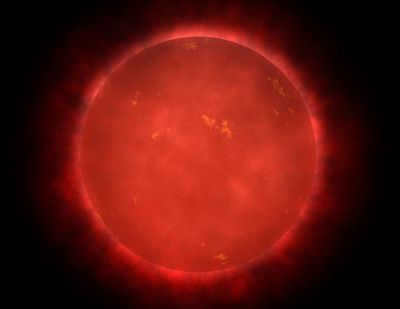
Essential details
In 1915, the talented astronomer Robert Innes made a groundbreaking discovery – a star that happens to be the closest to our own star. This remarkable celestial body was named Proxima Centauri. Despite its proximity to the Sun, Proxima Centauri pales in comparison in terms of size. Its diameter is less than 7 times that of the Sun, and it emits a mere 0.17 percent of the Sun’s luminosity. While the distance between our star and Proxima Centauri is just over 4 light years, this may seem insignificant on a cosmic scale, but for humanity, it remains an unimaginable void.
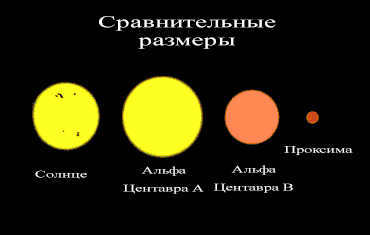
Modern technology
However, in the present era, humanity has not yet acquired the knowledge to navigate through the vastness of space at the speed of light. Therefore, let us delve into the question of how long it would take us to travel to Proxima Centauri using our current means of transportation. Presently, the Helios 2 autonomous spacecraft stands as the epitome of high-speed vessels, capable of reaching speeds of up to 253,000 kilometers per hour (a fraction of the speed of light). After conducting a brief calculation, it becomes evident that the journey would span over 18,000 years. This estimation assumes that the spacecraft’s engines remain fueled throughout the entire duration of the expedition. However, it is worth noting that our current technological capabilities only allow us to provide enough fuel for a 50-year voyage. As such, the human race must resolve a multitude of intricate technical challenges in order to reach the nearest star.
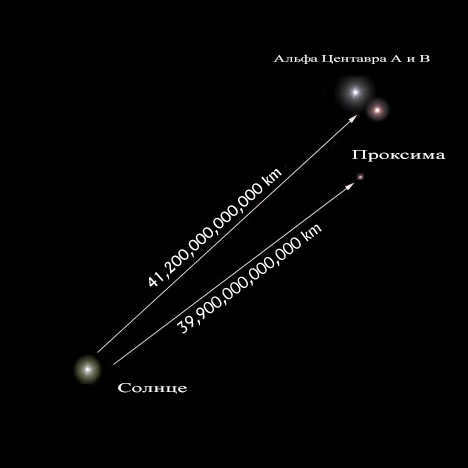
An insight into the future
Nevertheless, let’s take a glimpse into the future and explore possibilities that could potentially enable long-duration space flights. In order to sustain a flight for 18,000 years, an immense quantity of fuel would be required – billions of cubic meters of liquid fuel. The transportation of such vast volumes into orbit poses an incredibly complex challenge, not to mention the construction of a spaceship of monumental proportions. However, there exists an alternative approach to fuel consumption.
It has already been determined that a mere 17 grams of antimatter would be sufficient for 18 thousand years of flight! This means that energy concerns would be resolved instantly, eliminating the need for a vast spacecraft. Presently, the production of antimatter is a meticulous and intricate process. Considering the current economic climate, acquiring 17 grams of such material would cost approximately 180 trillion dollars, a sum that is beyond the means of any individual nation or even the global community. Nonetheless, there is a silver lining – the process of creating antimatter continues to improve each year, resulting in reduced costs. It is possible that in a century’s time, antimatter energy will be as commonplace as nuclear energy.
If scientists decide to pursue this method of space exploration, they will face the challenging task of mastering the containment and storage of antimatter. This is because just 1 gram of antimatter possesses an energy level that exceeds the magnitude of the Hiroshima bomb explosion!
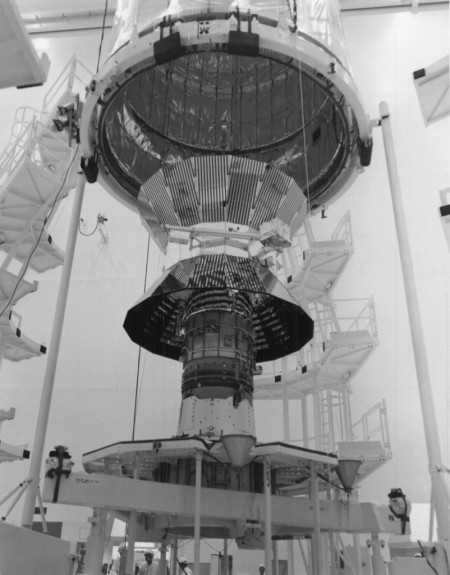
Fun fact
Many curious individuals wonder – how long would it take to fly to the nearest star by airplane? We can answer that although airplanes cannot fly in space due to the lack of atmosphere, in pure theory, it would take approximately 1.5 million years to cover the distance from the Sun to Proxima Centauri. It’s pointless to even consider other means of transportation, as the count would reach hundreds of millions, if not billions, of years!
Humanity is destined to visit other star systems, the only question is when. Just a couple of centuries ago, no one believed that air travel was possible, and now airplanes are a common part of our world. People have even set foot on the moon, and are actively preparing to land on Mars, so the time will come when we will reach Proxima Centauri!

Since the dawn of space exploration, we have achieved a great deal. We have successfully sent humans to the Moon, touched down on Mars, and even landed on Titan, one of Saturn’s moons. Today, we have man-made satellites scattered throughout the entire solar system. However, have you ever pondered the possibility of reaching another star?
I mean, is that even feasible? Voyager 1, the most distant man-made spacecraft, departed the solar system roughly four years ago and was launched way back in 1977. After more than four decades of travel, this unmanned probe is now a staggering 21 billion kilometers away from the Sun, maintaining a steady velocity of 16.99 k/s. It holds the title of the fastest spacecraft to ever venture beyond the solar system.
Some might argue that if we can push the boundaries of our own solar system, then surely we can make our way to other stars. However, let’s not rush to any conclusions just yet.
By reaching Proxima Centauri, the closest star to Earth.
As indicated by Einstein’s exceptional hypothesis of relativity, the speed of light is the ultimate boundary at which any matter or data can move in the universe. Despite the fact that typically connected with light, it is really the speed at which all massless particles travel in a vacuum. The exact estimation of the speed of light is 299,792,458 m/s.
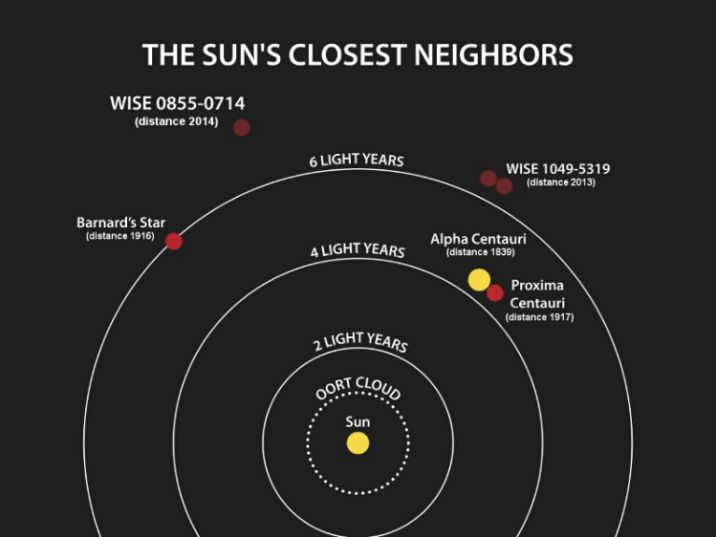
Proxima Centauri, the nearest star to Earth, is situated at a distance of more than 4 light years. In other words, even if the light were to travel at the tremendous speed of 299,792,458 m/s, it would take four years to reach our planet and vice versa.
Given its relatively close proximity, this star system has been considered as a potential flyby destination for the first ever interstellar spaceflight. Research indicates that the star is currently moving towards us at an estimated velocity of 22.2 km/s. At this pace, Proxima Centauri will be approximately 3.11 light years away from Earth in about 26,700 years.
The speed of Voyager 1 relative to the Sun is 17,000 m/s. However, the fastest man-made probe, Helios B, was launched to study the solar process and achieved a maximum speed of 70,220 m/s or 252,792 km/h. If, by chance, the Voyager probe was heading towards Proxima Centauri at a constant speed of 17,000 m/s, it would take over 76,000 years to cover the distance.
Alternatively, if the probe managed to reach the incredible speed of Helios B, it would still take at least 19,000 years to reach the red dwarf. While this option sounds more promising, it is still not a feasible solution.
The current status of space travel technology
There is a need for improvement in the technology we currently use, especially when it comes to space travel. At present, one of the most advanced propulsion systems utilized in spacecraft is the ion-driven engine. Ion propulsion was once considered a figment of science fiction, but that is no longer the case.
In recent times, ion propulsion technology has been employed in various ongoing interplanetary missions, including Deep Space 1 and Dawn. It was also utilized in the European Space Agency’s SMART-1 lunar orbiter, which successfully concluded its mission in 2006. However, if we were to employ ion engines in our endeavor to reach Proxima Centauri, a substantial quantity of fuel (xenon) would be required.
If we assume that Deep Space 1’s maximum capacity is filled with 82 kg of xenon, and this propels the test vehicle to a maximum speed of 56,000 km/h, it would take over 81,000 years to reach Proxima Centauri.
Gravity method
In addition to advanced propulsion, space travel can also be accelerated by successfully implementing the Gravity Assist method. This method involves a spacecraft utilizing the gravitational force of a planetary body to modify its speed and trajectory. Gravity Assist is an extremely valuable technique for space missions.
In 1974, the NASA Mariner 10 mission became the first to utilize the gravitational pull of Venus to slingshot towards Mercury. Then, in the 1980s, the Voyager 1 probe utilized the gravitational fields of Jupiter and Saturn to achieve its current velocity, propelling it into interstellar space.
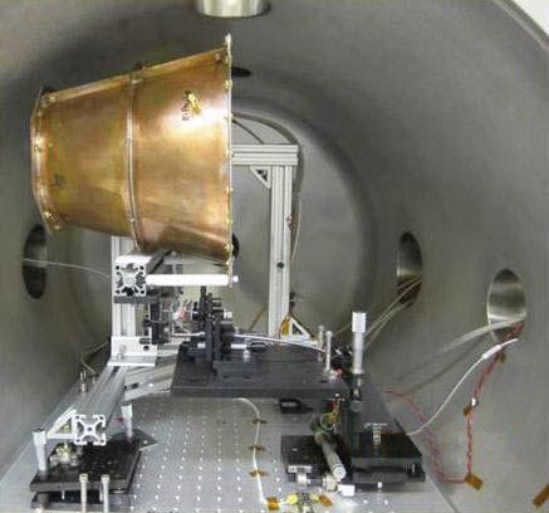
Electromagnetic (EM) drive
The Radio Frequency Resonant Hollow Motor, also known as the EM Drive, is an innovative concept that has gained significant popularity. The main principle behind this technology is to generate propulsion by utilizing an electromagnetic field within a cavity. This groundbreaking idea was initially proposed by Roger K. Schowyer, a British scientist, in 2001.
In 2015, scientists conducted experiments that confirmed the potential of an EM Drive-powered spacecraft to reach Pluto in just 18 months, a remarkable feat considering that it took the New Horizons spacecraft 9 years to accomplish the same journey. However, the exact mechanism of how the EM Drive works still remains unclear. Based on current calculations, it would take over 13,000 years for an EM Drive spacecraft to reach Proxima Centauri, our closest neighboring star system. Although we are making progress, we have not yet achieved this level of advanced space travel.
Nuclear thermal and nuclear electric propulsion
Another intriguing idea that has been under consideration by NASA for many years is the utilization of nuclear propulsion in spacecraft. The concept involves the use of a nuclear thermal propulsion (NTP) rocket, which relies on the heating of liquid hydrogen inside a reactor using deuterium or uranium. This process transforms the hydrogen into plasma, which is subsequently expelled through the rocket’s nozzle, generating the necessary thrust.
Antimatter Engine
Are you familiar with the concept of antimatter? If not, antimatter refers to the material composed of antiparticles that have the opposite charge of regular particles. The idea is to utilize the energy generated from the interaction between matter and antimatter as a means of propulsion. According to a report presented at the 39th AIAA / ASME / SAE / ASEE Joint Conference and Exposition, it would take over 800,000 metric tons of propellant for a two-stage rocket powered by antimatter to reach Proxima Centauri.
While just one gram of antimatter could generate an immense amount of energy, the production of a single gram would necessitate 25 million billion billion kilowatt hours of energy and a significant financial investment. At present, scientists have only managed to create less than 20 nanograms of antimatter.
So, it is apparent that unless we achieve a remarkable advancement in propulsion, we might only be confined to our very own solar system or we will need to devise an unfavorable long-term transit plan.
Hello! If you travel one way only and do not return with a constant acceleration of 2g (which is the maximum a human can endure) for a distance of 4.5 light years – you will need at least 100 years of flight to reach there! Where can we find so much fuel and who would be willing to embark on such a suicidal mission? Most likely, space outside the solar system will be inaccessible to humans forever due to the immense distances! Only robotic devices will be able to explore the outer reaches of the solar system! Moreover, the possibility of human space travel within the solar system is very limited and will soon become a reality, please refer to my answer to the question: otvet.mail /question/14895458/ and also for additional information: otvet.mail /question/12926552/ Have a wonderful day!
If traveling at the speed of light, it would take approximately 8.5 minutes.
It would take a long four years, four months, and seven days)
The velocity of the sun is 16.7 km/sec in V3. In one sv year, it covers about 10^13 km. Therefore, it would take approximately 40^13/16.7 seconds.
When considering the nearest star to the sun, it takes light approximately 4.3 years to travel that distance. So, to determine the proportion of the speed of light that the “fastest rocket” can achieve, we must calculate it accurately without losing track of the zeros.
By “the fastest,” do you mean a rocket that has reached a speed sufficient to escape the gravitational pull of the Sun and not remain trapped in its orbit indefinitely? In reality, no rocket has achieved this velocity yet. The maximum achieved so far was by Pioneer, Voyager, and Galileo, which utilized clever maneuvers near planets to accelerate. However, even with these maneuvers, it took thousands of years for them to reach the nearest star. Furthermore, their destinations remain unknown.
Which particular star captures your interest, and what exactly is that speedy rocket, may I ask? )))).
It possesses the ability to soar through the sky exclusively during the night, when the stars are readily visible. However, regrettably, it will not reach its intended destination during the cover of night; come morning, it will veer off course!
The closest star to our Sun is Proxima Centauri. It has a diameter that is seven times smaller than the Sun and its mass is also seven times smaller. The star’s luminosity is only 0.17% of the Sun’s, which means it emits just 0.0056% of the visible spectrum to the human eye. This explains why Proxima Centauri cannot be seen with the naked eye and why it was only discovered in the 20th century. The distance from the Sun to Proxima Centauri is 4.22 light-years, which is relatively close in cosmic terms. In fact, the gravitational influence of our Sun extends to about half that distance. However, for human beings, this distance is incredibly vast. Distances in the scale of planets are measured in light-years, which is the distance that light travels in a vacuum in 365 days. This value is equivalent to 9.64 trillion kilometers. To better understand these distances, let’s consider some examples. The distance from Earth to the Moon is 1.28 light-seconds, and with current technology, it takes about 3 days to travel that distance. Distances between planets in our solar system range from 2.3 light-minutes to 5.3 light-hours, meaning the longest journey would take a little over 10 years in an unmanned spacecraft. Now, let’s consider how long it would take to travel to Proxima Centauri. The current speed record holder is the unmanned spacecraft Helios 2, which travels at a speed of 253,000 kilometers per hour, or 0.02334% of the speed of light. Using this speed, it would take us approximately 18,000 years to reach the nearest star. With our current level of technology, we can only sustain a spacecraft for about 50 years.
The answer to the question is unknown, however, it is estimated that the Voyager satellite will require approximately 85,000 years to complete its journey.
If one were able to travel at the speed of light, it would be possible to reach Proxima Centauri and any other destination in the universe almost instantaneously (at least from the perspective of an astronaut). However, due to the effects of time dilation, while the astronaut would arrive at Proxima Centauri, 4.3 years would have passed on Earth. Similarly, if the astronaut were to travel to the center of the galaxy, the solar system as we know it would cease to exist by the time of their arrival. Therefore, while it may be theoretically possible to colonize the universe at the speed of light (and it is possible that this has already been achieved), communication with past generations would be impossible.
The distance to Proxima Centauri is approximately 39 trillion kilometers.
That’s the amount of time it requires to reach the Red Planet
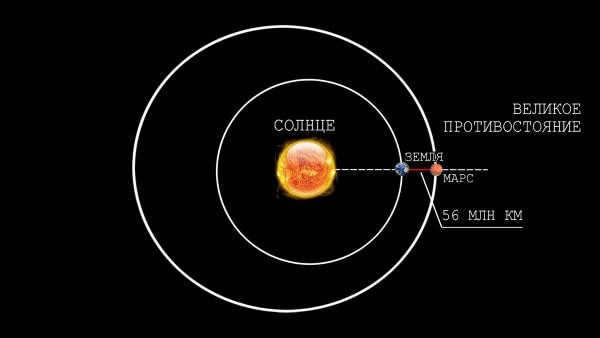
Despite the fact that no human being has yet had the opportunity to step foot on Mars, numerous unmanned spacecraft and “Mars rovers” have already had the privilege of exploring its surface. How long did these remarkable machines travel from Earth to Mars?
In order to gain a better understanding of the vast distance between the two planets and the amount of time it takes to travel from Earth to Mars, it is important to familiarize ourselves with past missions to this celestial body:
- Mariner-4. The initial mission to approach the Red Planet was successfully accomplished by Mariner-4 in 1964.Mariner-4.) is a sophisticated unmanned spacecraft under the NASA program. The journey to Mars took approximately 228 days.. During this time, the spacecraft captured remarkable images of Mars from a distance ranging between 16,800 km to 12,000 km above its surface – an awe-inspiring view for scientists and space enthusiasts alike. The primary objective of this mission was to investigate the possibility of liquid water and potential signs of life on Mars. The transmission of 21 images from Mariner-4 provided conclusive evidence that Mars more closely resembles the Moon rather than the Earth, with the only possibility of sustaining life being limited to mosses and lichens.
- Mariner-6 (Mariner-6) embarked on its journey in February 1969. It took Mariner-6 a total of 155 days to reach its destination. This time, it approached the surface of the planet at a distance of only 3429 km. Apart from conducting surveys, this spacecraft had the crucial task of analyzing the composition of the atmosphere and determining the surface temperature of Mars using infrared radiation.
- Mariner-7 (Mariner 7) was an identical twin of Mariner-6, and its voyage to Mars lasted 128 days. It also conducted research on the planet’s atmosphere and temperature.
- In 1971, Mariner 9 (Mariner-9) was launched. It reached its destination in 168 days and became the first satellite to orbit the Red Planet. Its primary mission was to map Mars. It remained operational until October 1972, when it exhausted its supply of compressed gas.
- Viking-1 (Viking-1). The inaugural spacecraft engineered for touchdown on the Red Planet took off on June 19, 1976, and arrived after a duration of 304 days.
- Viking-2 (Viking-2) was launched on August 7, 1976, and reached Mars after a duration of 333 days. It also comprised of an orbital station and a probe. The primary objective of this space program was to conduct a search for extraterrestrial life. Furthermore, approximately 16 thousand photographs of Mars were captured. In the first color images, Mars reaffirmed its secondary appellation. The planet appeared as a crimson desert, and even the sky exhibited a pink hue due to the dust particles being stirred up by the wind.
In 1996, the Mars Global Surveyor, known as the Mars Global Surveyor (Mars Global Surveyor), successfully arrived at Mars after a journey of 308 days. This NASA project entered Mars’ circular polar orbit in 1999 and conducted extensive mapping of the planet’s surface. The spacecraft operated until 2001.
From the above information, it is evident that the duration of space travel greatly depends on the relative positions of celestial bodies.
Flights that did not succeed
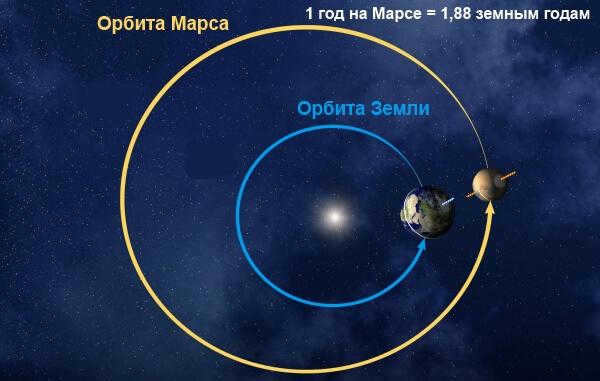
Aside from these, there were numerous other projects that did not succeed. For instance, the “Mars” spacecraft, which was built in the USSR, faced technical issues on a regular basis. There were instances of launch vehicle accidents, malfunctioning upper stages, and loss of communication with the spacecraft. The “Probe 2“, sent by the Soviet Union to Mars in 1964, never reached the planet’s vicinity.
However, the USSR was not the only country to experience failures in this field. In 1971, the United States’ “Mariner 8” had a launch vehicle failure, while in 1998, Japan’s Mars orbiter launch attempt was unsuccessful. Additionally, China’s launch attempt in 2011 also ended in failure.
All this discussion revolves around the challenges involved in planning and executing a flight of this nature. The responsibility becomes even more daunting when there are passengers on board.
A cosmic investigator and a case of alien abduction
This theory, proposed in the early 20th century, suggests that the Moon was once an independent planet within our solar system. It is believed that due to the influence of neighboring celestial bodies, the Moon eventually came within the gravitational pull of Earth and became captured by it. This hypothesis is supported by the existence of lunar myths and legends in the ancient cultures of various civilizations.
Recent studies have cast doubt on the capture hypothesis. It has been determined that if a celestial body with the mass equivalent to that of the moon were to enter Earth’s gravitational field, it would either crash into the Earth’s surface or be flung far beyond the Earth’s orbit. Even if it were successfully captured, the moon would have a retrograde orbit and a highly eccentric trajectory.
Furthermore, the moon differs greatly from the solid planets in terms of its physical and chemical properties. It is unlike any other planet in the solar system and could not have formed in the vicinity of the gas giants due to the lack of sufficient dust and gases necessary for the formation of an Earth-like celestial body.
Advanced Approaches
When it comes to determining the duration of space travel, there are modern techniques that make the process much more straightforward, especially when utilizing current technology and celestial bodies within our solar system. For instance, by employing the same cutting-edge propulsion system utilized by the New Horizons mission – 16 hydrazine monofuel engines – it is feasible to reach the Moon in an astonishingly brief span of just 8 hours and 35 minutes.
An additional example is the European Space Agency’s groundbreaking SMART-1 mission, which successfully journeyed to the Moon using ion thrust. This revolutionary technology, similar to the one employed by the Dawn space probe to reach Vesta, enabled the SMART-1 mission to cover the distance to the Moon in a span of one year, one month, and two weeks.
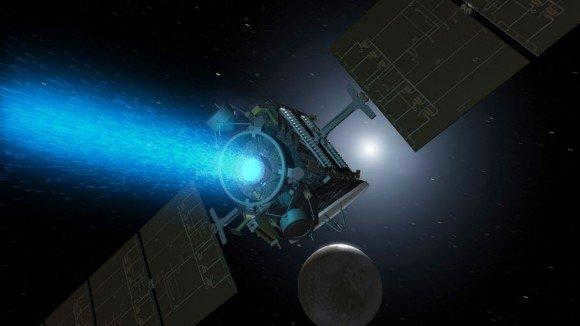
From utilizing a swift rocket spacecraft to employing an economical ion engine, we have a variety of choices for traversing our local region of space – we can even harness the immense gravitational force of Jupiter or Saturn as a slingshot. However, if we aspire to venture further, we must enhance our technological capabilities and explore new frontiers.
When discussing potential methods, we are referring to those that utilize existing technologies or those that are technically feasible but have not yet been developed. Some of these approaches have withstood the test of time and have been validated, while others remain uncertain at this point. In summary, they offer a potential but highly time-consuming and financially burdensome means of reaching even the closest star.
Is it possible that a chunk of the Earth broke off and became the Moon?
One of the prevailing theories about the origin of the Moon suggests that it is a piece of the Earth that separated and found its own orbit.
During the early stages of its formation, our planet may have experienced a collision with a large celestial body called the protoplanet Theia. This collision occurred at an angle, causing a fragment of Theia along with a portion of the Earth’s mantle to be ejected into orbit. Over time, this debris coalesced to form the Moon. As a result of this catastrophic collision, the Earth’s axis of rotation was also altered.
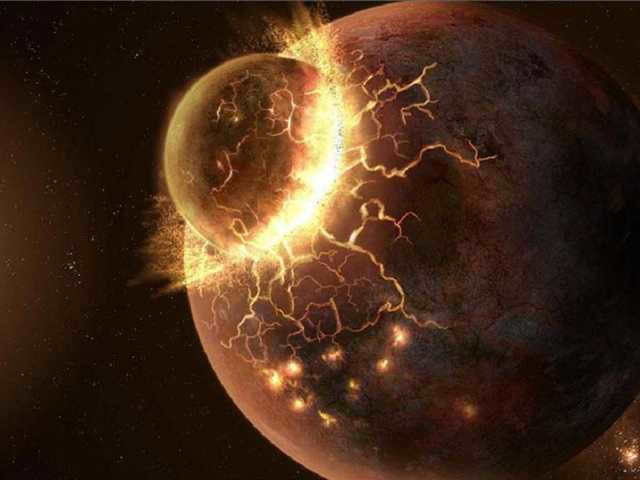
artistic depiction of the impact
This explanation is now widely accepted. It confirms the similarity in composition between our planet and its satellite, as well as the peculiarities of the celestial mechanics of both bodies. It is believed that the protoplanet that collided with Earth originated from one of the Sun-Earth system’s libration points. This is why the impact did not result in a catastrophic event, as the protoplanet only grazed the Earth tangentially due to its insufficient velocity.
Let’s Imagine
Imagine a scenario where a fictional space crew touches down on the surface of a distant planet. Unlike Earth, this planet’s surface is not solid, but rather consists of a peculiar substance referred to as “icy”. However, in reality, this so-called “icy” surface is actually a vast expanse of dense, scorching hot liquid with an unexpectedly high level of electrical conductivity. To survive in this harsh environment, the crew members will need to adapt to breathing in a mixture of methane, hydrogen sulfide, and acetylene. This unique atmosphere is completely incompatible with the life of any known biological organism.
One of the most captivating features of this alien planet is the breathtaking hue of its atmosphere. The romantic azure color is a result of the presence of hydrogen, methane, and helium. Interestingly, this hue differs from the more subdued aquamarine hue observed on Uranus, which has led leading scientists to speculate that there may be an unidentified component within the gas mixture of this planet’s atmosphere that has yet to be discovered.
Neptune is renowned for its powerful hurricanes, reaching wind speeds of up to 600 meters per second. These storms occur despite the extremely low air temperature, almost reaching absolute zero. One of Neptune’s most notable features is the Great Dark Spot, a stable formation that exhibits supersonic characteristics, similar to the epicenters of hurricanes on Earth.
There are currently 14 satellites orbiting around the planet. The movement of these satellites across the sky is unimaginable for humans, but a simple computer program can easily calculate their paths, even when accounting for the retrograde motion of the largest satellite, Triton.
Calculating the Sun’s distance in ancient Greece
Ancient Greece made significant contributions to the measurement of the Earth-Sun distance using basic tools and geometric techniques.
Aristarchus of Samos’s hypotheses
Aristarchus of Samos, an astronomer from ancient Greece in the 3rd century B.C., was the first to attempt to determine the distance to the Sun. He proposed a heliocentric model of the universe and utilized geometric principles to estimate the sizes of celestial objects and their distances from one another.
Aristarchus based his calculations on the assumption that the Moon, which is spherical, reflects sunlight. At the halfway point of its phase, a right angle can be formed between the Earth, Moon, and Sun. In this scenario, the side connecting the Earth and Moon serves as the cathetus, while the side connecting the Earth and Sun serves as the hypotenuse. According to Aristarchus’ theory, the distance to the star can be determined by the ratio of the cathetus to the hypotenuse, which is 1:19. However, these calculations were found to be inaccurate, as they differ from the actual values by a factor of 20. This discrepancy can be attributed to the imprecise nature of visual observations, which Aristarchus relied on for his data and which are prone to significant errors.

Aristarchus of Samosia proposed that the ratio of the cathetus to the hypotenuse could determine the distance from the Earth to the Sun. Credit: wikireading.ru.
Hipparchus of Nicaea’s Observations
Hipparchus of Nicaea, a renowned mathematician from ancient Greece in the 2nd century B.C., was the greatest astronomer of his time. He incorporated the precise techniques used by the ancient Babylonian astronomers into his calculations of celestial bodies.
Hipparchus’ method was based on his understanding of the cause of lunar eclipses, namely that the moon is in the shadow of the Earth. In such cases, the shadow takes on a conical shape with the top closer to the moon. By employing basic measuring instruments, the astronomer was able to calculate the radii of the celestial bodies he was studying. By utilizing the principles of triangle similarity, he was able to determine the distance to the Sun, which he found to be 382,000 kilometers. Hipparchus’ findings were considered the most precise in ancient times.
Riding on photons
Imagine if one day humanity discovers how to travel at the speed of light in their spacecraft, how quickly could we reach our nearest star? Well, the answer is surprisingly short – just 8 minutes and 19 seconds! That’s the amount of time it takes for light to travel from the Sun to the Earth.
Next time you gaze up at the Sun, remember that you’re actually seeing it as it appeared over eight minutes ago.
Many people often wonder how many light years it would take to journey to our Sun. However, it’s a bit of a trick question. Such a trip wouldn’t even take a single year. In fact, the time it would take to cover the 150 million kilometers to reach the Sun would only be equivalent to 0.0000159 light years.
It is my hope that in the coming years, individuals will not only have the ability to soar through the skies and touch the Sun, but also have the freedom to explore distant stars and even entire galaxies! However, achieving this feat will necessitate significant advancements in numerous scientific disciplines.
We trust you had a pleasant experience with our enlightening content and will grace us with your presence once more!
In 1915, the closest star to our solar system, known as Proxima Centauri, was uncovered by Robert Innes. This particular star is classified as a red dwarf and can be found within the Alpha Centauri system.
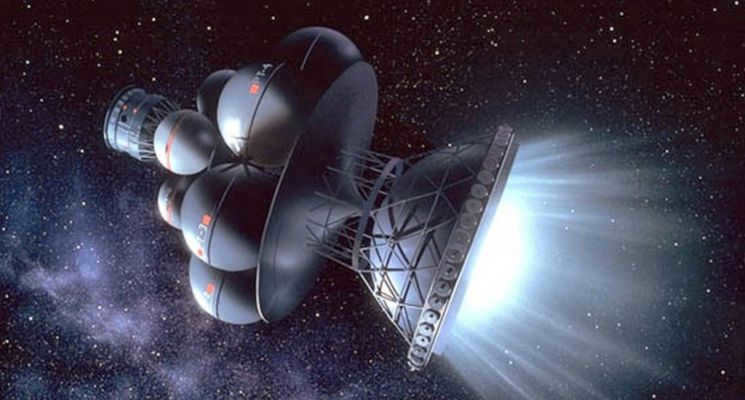
At a certain point in our lives, we all have pondered over this inquiry: how much time does it require to journey to the celestial bodies? Is it possible to complete such a voyage within the span of a human existence? Could such journeys become a customary part of everyday life? The responses to this intricate question are numerous and contingent upon the inquirer. Some are straightforward, while others are more intricate. There are far too many variables to consider in order to arrive at a comprehensive answer.
Regrettably, there are no concrete approximations available to assist in discovering such an answer, which is a source of frustration for futurologists and enthusiasts of interstellar travel. Regardless of our preferences, outer space is exceedingly vast (and intricate), and our technological capabilities remain limited. However, if we ever choose to depart from the familiar confines of our “home nest,” there are several methods at our disposal to reach the nearest star system within our galaxy.
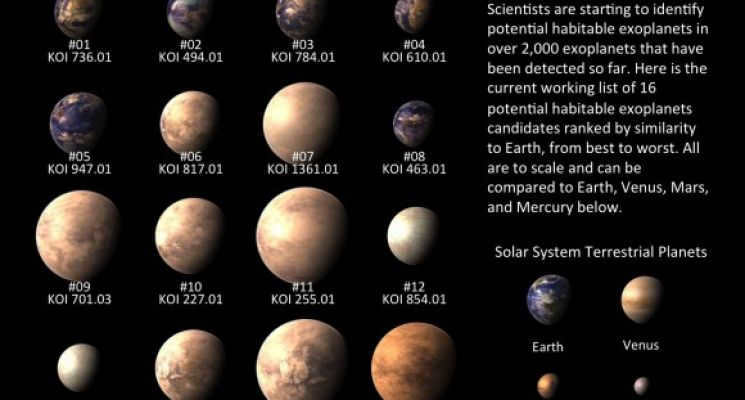
Potential worlds capable of supporting life in the vast expanse of the Universe
In the forthcoming era, should mankind aspire to venture beyond the confines of our solar system, an abundance of stellar options await our exploration, with a high likelihood of encountering environments conducive to sustaining life. However, the question remains: which destination shall we set our sights upon, and what duration shall the journey entail? It is important to note that the aforementioned deliberations are purely speculative, as the realm of interstellar travel currently lacks any established protocols. Nonetheless, let us heed the words of Gagarin and embark on this extraordinary odyssey!
Set your sights on a star
As previously mentioned, Proxima Centauri is the nearest star to our solar system, making it a logical choice for an interstellar mission. Proxima is located within the triple star system Alpha Centauri and is situated 4.24 light-years (1.3 parsecs) away from Earth. Alpha Centauri is actually the brightest star among the three in the system and is part of a closely-knit binary system that is 4.37 light-years away from our planet. On the other hand, Proxima Centauri, which is the faintest star in the system, is an isolated red dwarf positioned 0.13 light-years from the binary system.
When discussing interstellar travel, the idea of traveling faster than the speed of light often comes to mind. Concepts like warp speeds, wormholes, and subspace propulsion are common in science fiction but are either highly fictionalized, such as the Alcubierre engine, or purely exist in the realm of imagination. The reality is that any deep space mission would span over multiple generations.
So, what would be the duration of the journey to Proxima Centauri if we begin with one of the slowest forms of space travel?
Current approaches
When it comes to estimating the duration of space travel, it becomes much more complex when we consider the existing technology and celestial bodies in our solar system. For instance, utilizing the same propulsion system employed by the New Horizons mission, which consists of 16 hydrazine monofuel engines, it is feasible to reach the Moon in a mere 8 hours and 35 minutes.
Another noteworthy example is the European Space Agency’s SMART-1 mission, which utilized ion thrust to travel to the Moon. With this groundbreaking technology, a variation of which was also utilized by the Dawn space probe to reach Vesta, the SMART-1 mission required a year, a month, and two weeks to reach the Moon.
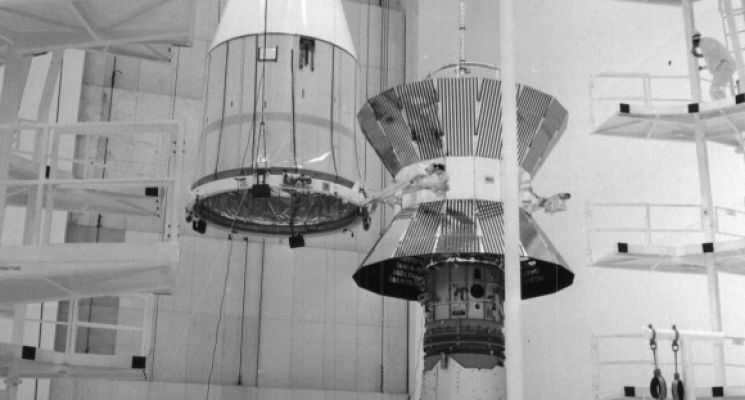
From a speedy rocket spacecraft to an economical ion engine, we have a variety of choices for traversing local space – and we can utilize Jupiter or Saturn as an enormous gravity slingshot. However, if we intend to venture a little further, we will need to bolster the power of technology and explore new opportunities.
When discussing potential methods, we are referring to those that involve existing technologies or those that are theoretically possible but have not yet been realized. Some of these methods, as you will see, have been tried and tested, while others are still uncertain. In short, they present a potential but highly time-consuming and financially burdensome prospect for traveling to even the closest star.
Ion propulsion
Currently, ion propulsion is the slowest and most cost-effective method of propulsion. Ion propulsion was once seen as a concept only found in science fiction, but in recent years, the supporting technologies for ion propulsion have become a reality. The SMART-1 mission by the European Space Agency is a prime example of a successful lunar expedition accomplished through 13 months of spiral motion from Earth.

The spacecraft SMART-1 employed ion engines powered by solar energy. These engines utilized Hall effect motors, which converted electricity generated by solar cells into propulsive force. Remarkably, SMART-1 required only 82 kilograms of xenon fuel to successfully reach the Moon. Each kilogram of xenon fuel provided a delta-V of 45 m/s. Although this method of propulsion is highly efficient, it is not the fastest available.
Back in 1998, the Deep Space 1 mission became one of the pioneering missions to utilize ion engine technology. This mission was aimed at reaching comet Borrelli. Just like SMART-1, the Deep Space 1 spacecraft utilized a xenon ion engine and consumed 81.5 kilograms of fuel. Over a period of 20 months, the spacecraft achieved speeds of 56,000 km/h during its flyby of the comet.
If ion propulsion is to be utilized in a mission to Proxima Centauri, the engines must be equipped with a robust power source (nuclear power) and ample fuel reserves (although smaller in comparison to traditional rockets). However, assuming that 81.5 kg of xenon fuel corresponds to a velocity of 56,000 km/h (without considering other propulsion methods), calculations can be conducted.
When operating at its maximum speed of 56,000 km/h, Deep Space 1 would require approximately 81,000 years to traverse the 4.24 light-years between Earth and Proxima Centauri. In terms of time, this is equivalent to roughly 2,700 human generations. It can be concluded that an interplanetary ion engine would be too sluggish for a manned interstellar mission.
However, if the ion engines are enlarged and enhanced (i.e., resulting in a much higher speed of ion exodus), and if there is sufficient rocket fuel to span the entire distance of 4.24 light years, the travel time will be significantly decreased. Nonetheless, it would still exceed the average human lifespan.
Utilizing Gravity Maneuvering
The most expeditious means of traversing space involves employing gravity maneuvering. This technique entails a spacecraft utilizing the relative motion (i.e., orbit) and gravitational force of a celestial body to alter its trajectory and velocity. Gravity maneuvers are an exceptionally advantageous spaceflight maneuver, particularly when employing Earth or another massive planet (such as a gas giant) for acceleration.
The Mariner 10 spacecraft was the pioneer in utilizing this method, taking advantage of the gravitational force of Venus to gain speed and head towards Mercury in February 1974. During the 1980s, the Voyager 1 probe employed the gravitational fields of Saturn and Jupiter to perform maneuvers and accelerate up to a remarkable speed of 60,000 km/h, eventually venturing into the vastness of interstellar space.
The Helios 2 mission, which commenced in 1976 with the objective of investigating the interplanetary medium between 0.3 a.e. and 1 a.e. from the Sun, holds the distinction of achieving the greatest velocity through a gravitational maneuver. At that moment, both Helios 1 (launched in 1974) and Helios 2 held the record for the closest approach to the Sun. Unlike its counterpart, Helios 2 was launched using a traditional rocket and positioned into an orbit of significant elongation.

Thanks to the significant eccentricity (0.54) of the solar orbit that lasts for 190 days, Helios 2 managed to achieve a top speed of more than 240,000 km/h when it reached perihelion. This incredible orbital velocity was solely influenced by the gravitational force of the Sun. Technically speaking, the velocity at perihelion of Helios 2 was not a result of a gravitational maneuver but rather the maximum orbital velocity. Nevertheless, this spacecraft still holds the title of being the fastest man-made object ever created.
If Voyager 1 were moving towards the red dwarf Proxima Centauri at a steady pace of 60,000 km/h, it would have required 76,000 years (or over 2,500 generations) to traverse that distance. However, if the spacecraft were to achieve Helios 2’s remarkable speed – a constant velocity of 240,000 km/h – it would take 19,000 years (or more than 600 generations) to journey 4,243 light-years. While this is significantly improved, it is still far from being feasible.
Electromagnetic EM Drive
The EM Drive, also known as the resonant cavity radio frequency engine, is an innovative method for interstellar travel. This groundbreaking concept was first proposed in 2001 by Roger Scheuer, a British scientist who established Satellite Propulsion Research Ltd (SPR) specifically for this project. The engine operates on the principle that electromagnetic microwave cavities have the ability to convert electricity directly into propulsive force.
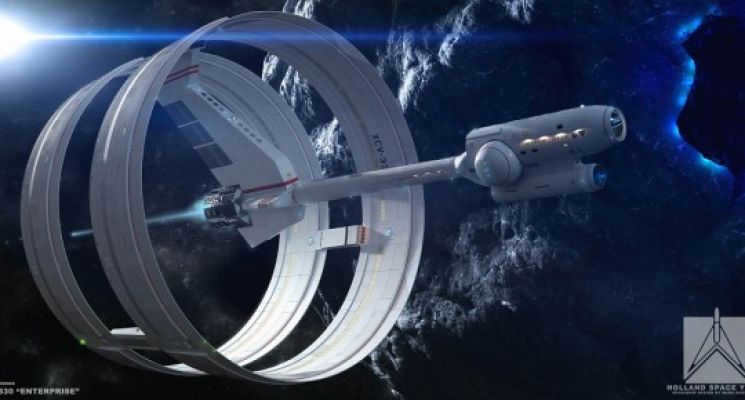
While conventional electromagnetic engines are designed to move a specific mass, such as ionized particles, this particular propulsion system does not rely on the reaction of the mass and does not emit directed radiation. This engine has faced significant skepticism due to its violation of the law of conservation of momentum, which states that the total momentum of a system remains constant and cannot be created or destroyed, only changed by forces.
However, recent experiments with this technology have yielded promising results. In July 2014, at the 50th AIAA/ASME/SAE/ASEE Joint Propulsion Conference in Cleveland, Ohio, scientists from NASA’s Advanced Jet Propulsion division announced successful tests of a novel electromagnetic engine design.

In April 2015, researchers at NASA Eagleworks (a division of the Johnson Space Center) reported the successful testing of this propulsion system in a vacuum, suggesting its potential use in space. In July of that year, a group of scientists from Dresden University of Technology’s Space Systems Department created their own iteration of the engine and observed significant propulsion.
In 2010, Prof. Zhuang Yang from Northwestern Polytechnic University in Xi’an, China, commenced publishing a series of articles regarding her exploration of EM Drive technology. In 2012, she documented a substantial input power (2.5 kW) and a measured thrust of 720 mn. Additionally, comprehensive testing was conducted in 2014, which included internal temperature measurements utilizing integrated thermocouples, confirming the functionality of the system.
Based on calculations derived from NASA’s prototype (which was assigned a power rating of 0.4 N/kilowatt), the spacecraft powered by electromagnetic energy could complete a journey to Pluto in under 18 months. This is a significant improvement compared to the New Horizons probe, which traveled at a speed of 58,000 km/h and required six times as long to reach its destination.
Sounds impressive. However, even with such advancements, it would still take 13,000 years for an electromagnetic-powered craft to travel to Proxima Centauri. While it’s close, it’s still not a feasible time frame. Additionally, until all the necessary components and technologies are developed, it’s premature to discuss its use.
Nuclear thermal and nuclear electric propulsion
Another option for interstellar travel is to utilize a spacecraft equipped with nuclear propulsion. NASA has been researching these possibilities for many years. A nuclear thermal propulsion rocket could utilize uranium or deuterium reactors to heat the hydrogen in the reactor, converting it into ionized gas (hydrogen plasma). This plasma would then be directed into the rocket’s nozzle, creating thrust.
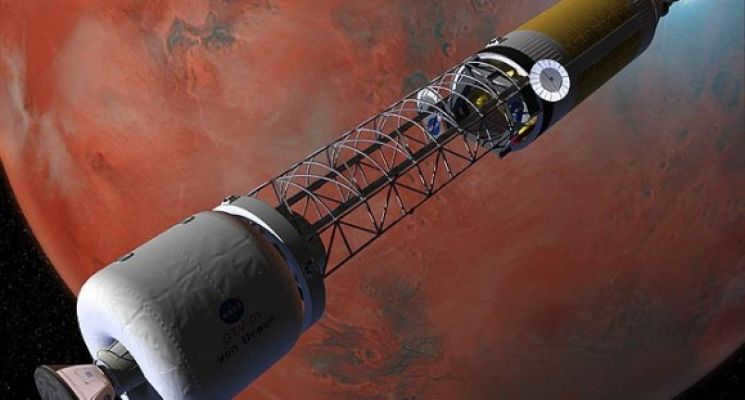
A nuclear-powered rocket would utilize a reactor to convert heat and energy into electricity, which would then drive an electric motor. In both scenarios, the rocket would rely on nuclear fusion or nuclear fission for generating propulsion, rather than the chemical propellants commonly used by modern space agencies.
When compared to chemical propulsion, nuclear propulsion offers significant advantages. Firstly, it boasts virtually unlimited energy density in contrast to rocket fuel. Additionally, a nuclear engine would deliver powerful thrust relative to the amount of fuel consumed. This would result in reduced fuel requirements, leading to decreased weight and cost for the spacecraft in question.

